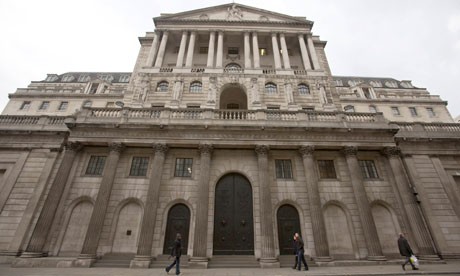Interest rate cut Implications for the bank and the consumer
Post on: 20 Май, 2015 No Comment

As the State Bank of Pakistan (SBP) lowered the interest rate to 9% on Friday, the question rose of how the banking sector of Pakistan will react. What will be the effect of this interest rate cut, and how will the consumer market respond? To analyze the implications of this interest rate cut, we need to take into account the trend of KIBOR in the recent past and the reactionary steps taken by banks.
Till June 2011, the KIBOR rate was hovering around 14.5%. With the savings floor set at 5%, the banking sector was enjoying high margins of profits on their deposits. The guaranteed return of 14.5% on government lending deterred the banks from pursuing the private sector. During this period, consumer lending was negligible in Pakistan. Banks were focusing on recovering the bad debts from the 2007-09 eras. However, post June 2011, SBP started reducing interest rates. The first interest rate cut should have raised alarm bells in the banking sector. Their margins on deposits were being skimmed down. Few banks, such as Silkbank, Standard Chartered and Faysal Bank, shifted focus to consumer lending, post the first interest rate cut. But most banks, instead of entering the consumer market, strategized on expanding their deposit base to counter the KIBOR reduction.
When the savings floor was increased to 6% and the interest rate cut further in 2012, the consumer sector witnessed an increase in marketing for lending products. The private sector was approached for lending from various banks, however the momentum was slow. Banks were still cautious in their approach. The exorbitant margins on their deposits had made them lazy in the lending sector. The final interest rate cut in January 2013, bringing the KIBOR rate to 9.50% should have been the last wake up call for the banks. Deposit margins were down from 10 to 3.5%. This was the time to start investing in the private sector to counter the reduction in profit margins.
Why is it important for a bank to lend to the consumer sector? What implications does an interest rate cut have for the consumer? Banks should be eager to lend because their spreads on consumer loans are much higher than government loans. A standard spread on a personal loan varies between 15-20%. Margins on credit cards are higher, up to 30%. Additionally, high volume loans can be extended to the private sector at margins higher than the prevailing KIBOR rate. A banking institution, with a large deposit base, should ideally leverage it with a sizeable asset book as well. This mitigates the risk of interest rate cuts. From a consumer perspective, an interest rate cut reduces the cost of borrowing from a bank. The markup cost on consumer loans (especially those linked to KIBOR) is reduced. This allows a consumer to increase demand for consumer durables in an economy. Basic economics teaches us that increased demand, matched with supply, leads to growth in the economy. Moreover, private corporations are willing to undertake expansion projects with reduced debt servicing costs. An interest rate cut usually acts as a catalyst for growth in the economy.

The current interest rate cut is in line with the government’s policy to expand the economy. Consumers should expect cheaper lending options from the banking sector. If the banks are hungry for margins, they will increase their presence in consumer financing. More auto loans and home loan options will be available for consumers. Personal loans will be offered to lower income segments of the population to augment demand in the economy. If the banks actively pursue the private sector, we can witness expansion in various industries. This would lead to greater job opportunities, flourishing of business activity and inevitable growth in Pakistan’s economy.
We, at MyBankersOnline. feel that this interest rate cut would serve as the turning point for banks to re-enter the private sector. To maintain their profitability, banks will approach the consumers for financing solutions. The competition should also maintain the margins on consumer loans at reasonable levels. Pakistani consumers should be prepared to avail bank financing for pending expenditures at affordable costs. The private sector should gear up to meet the consumer demand. If all this is said and done, Pakistan should gear up for a brighter future!














